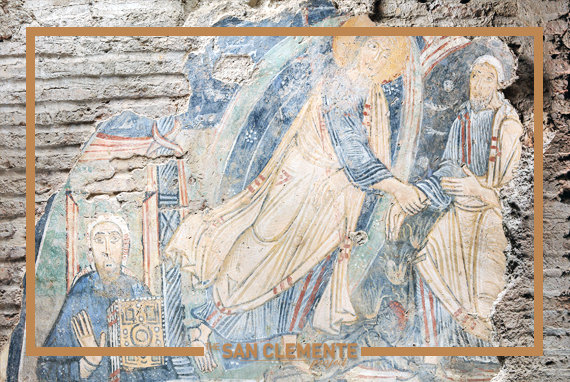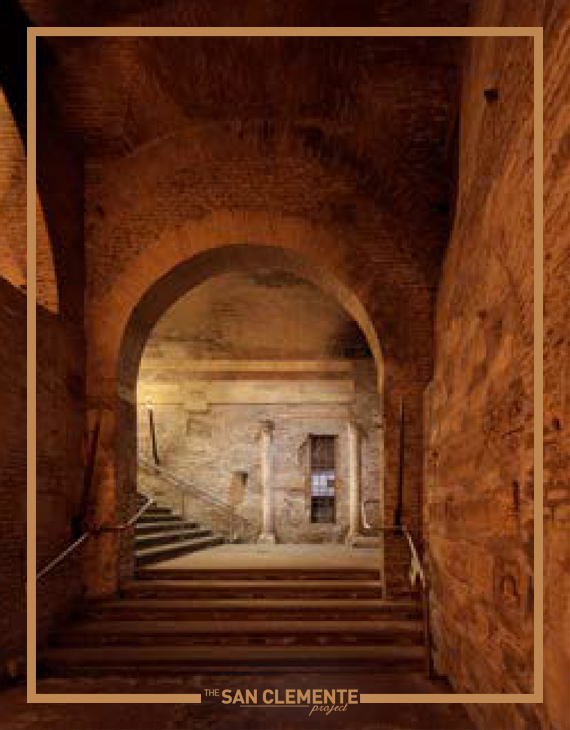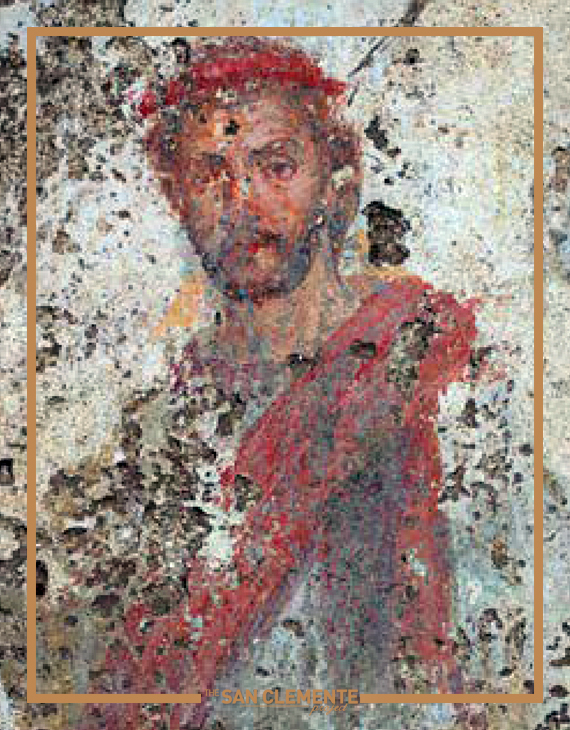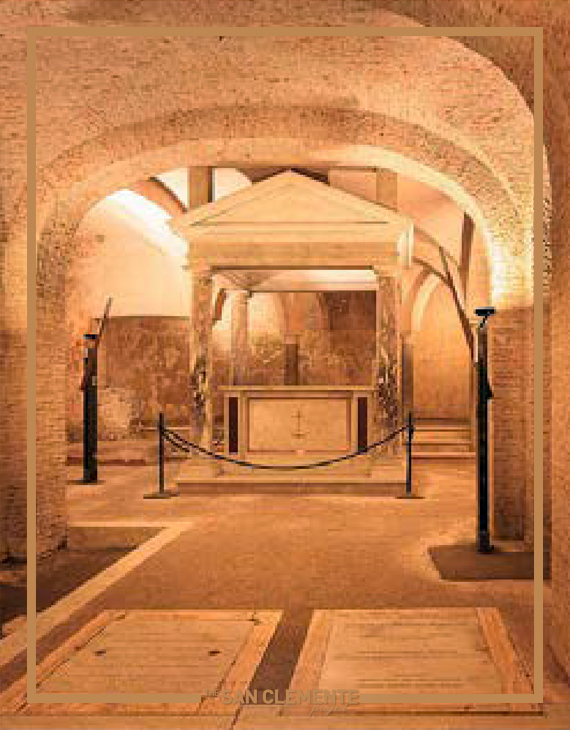

Descending underneath the 12th century church, visitors encounter the excavations of a remarkably intact fourth century basilica, boasting some of the finest medieval frescos, and one of the earliest known examples of the written Italian language.
Descending further still, visitors step back into the first century, the likely site of the ancient Roman mint and later addition of a 2nd century Mithraic temple.
Giovanni Battista de Rossi, the renowned archaeologist, famous for his work on the Roman catacombs, remarked about San Clemente: “In what other place in Rome, or even in Europe, can the archaeologist admire and study such a succession of monumental stratifications, which from our own day, go back in the order of time, and descend into the depths of the earth, by definite stages, for a period of over twenty centuries?”
According to tradition, the Basilica safeguards numerous important relics, like those of the two most important early Church Fathers and martyrs—Ignatius of Antioch, and Clement, the third Bishop of Rome, housed directly under the high altar.
A lateral chapel preserves the relics of St. Cyril, the famous ninth century Apostle to the Slavonic peoples and creator of the Cyrillic alphabet.


Stairs descending from the 12th century basilica to the 4th century basilica below..


2nd century Mithraic temple built inside of a 1st century Domus, or ancient Roman upper middle class home.


1st century fresco.


Altar in central nave of 4th century basilica.
